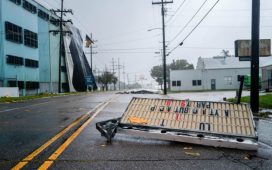Receive free Space industry updates
We’ll send you a myFT Daily Digest email rounding up the latest Space industry news every morning.
This is not a great year to be in the business of insuring satellites and rockets.
In recent months, the California-based Viasat has announced malfunctions in two of its most eagerly anticipated satellites: Viasat-3, which was to provide services to the Americas; and Inmarsat-6 F2, part of a fleet billed as “the world’s most technologically advanced commercial communications satellites ever launched”.
Then last week, Rocket Lab’s two-year record of flawless launches ended with the failure of its Electron rocket and the loss of the satellite it was carrying.
When all the mishaps are added up, claims could total roughly $1bn this year, say industry sources, against premium income of roughly $600mn.
Not since 2019 has the space insurance sector had such a bad year. Then, insurance rates doubled almost overnight. This time round that could be the best case.
“I think the situation in terms of losses vs premiums will be worse this year than 2019,” says Denis Bensoussan, head of space at Beazley insurers. “You can expect a larger and longer correction from the insurance market.”
The scale of that correction was a hot topic at the recent World Business Satellite Week in Paris. Many in the industry speculated about a contraction of underwriting capacity. Already several insurance providers have quit the market.
“There are a lot of people concerned about their position now,” one veteran space insurance broker told me. Another added: “It doesn’t look good on their five year average.”
Adding to insurers’ concerns is the complexity of business models in the most commercially dynamic region of space, low earth orbit; growing congestion in certain orbits; and a lack of international rules to govern this new use of space.
Space market research firm Euroconsult estimates that some 26,100 small satellites will be launched over the next decade — almost four times as many as the previous one. Most will be part of broadband mega-constellations in LEO, such as Elon Musk’s Starlink or the UK’s OneWeb. The risk of a disastrous cascade of collisions is a growing concern as LEO gets more populated.
Yet many of the companies operating there are not insured. According to Axa XL, of the 4,400 operational LEO satellites in 2021, just 47 were covered. Given that most LEO satellites are smaller, cheaper and usually part of a constellation with hundreds or thousands of spacecraft, the failure of one or two is not an issue. “They often buy less or no insurance because they have inherent redundant capacity in orbit,” said Adam Sturmer of space brokers Marsh.
Stephane Germain, president of methane tracking start-up GHGSat, said: “For the relatively small cost of these sats, putting a large insurance burden on small satellite operators would probably kill the mission in the first place.”
If there is a reluctance to insure assets in low earth orbit, operators cannot ignore the requirement in many countries for third party liability cover. In the UK, operator liabilities are capped at €60mn per satellite, with anything more covered by the state as provided for under international law.
Yet this cap is under review in the UK and other countries are also considering their approach. The current cap made sense when commercial space meant constellations of two or three satellites 35,000kms above the earth in geostationary orbit. It does not make sense for mega-constellations in regions closer to earth. The cost would be prohibitive.
Earlier this month the UK proposed varying liability requirements according to the mission. The UK hopes such a framework could be the basis for internationally shared regulatory standards.
This is not only badly needed to help reduce the risk of devastating accidents. It could also help to reassure a volatile space insurance market. Widely shared regulatory standards could be a valuable tool for assessing risk, allowing insurers to reward the most sustainable projects with lower premiums.
Even if LEO operators do not yet see an urgent need for cover on orbit, the space sector needs a stable and viable insurance market. Over the next decade, Euroconsult estimates the small sat industry will accumulate about $110bn in market value. As the industry matures, and customers come to rely on its services, the day may come when the risks of disruption are too great even for the likes of Starlink.











